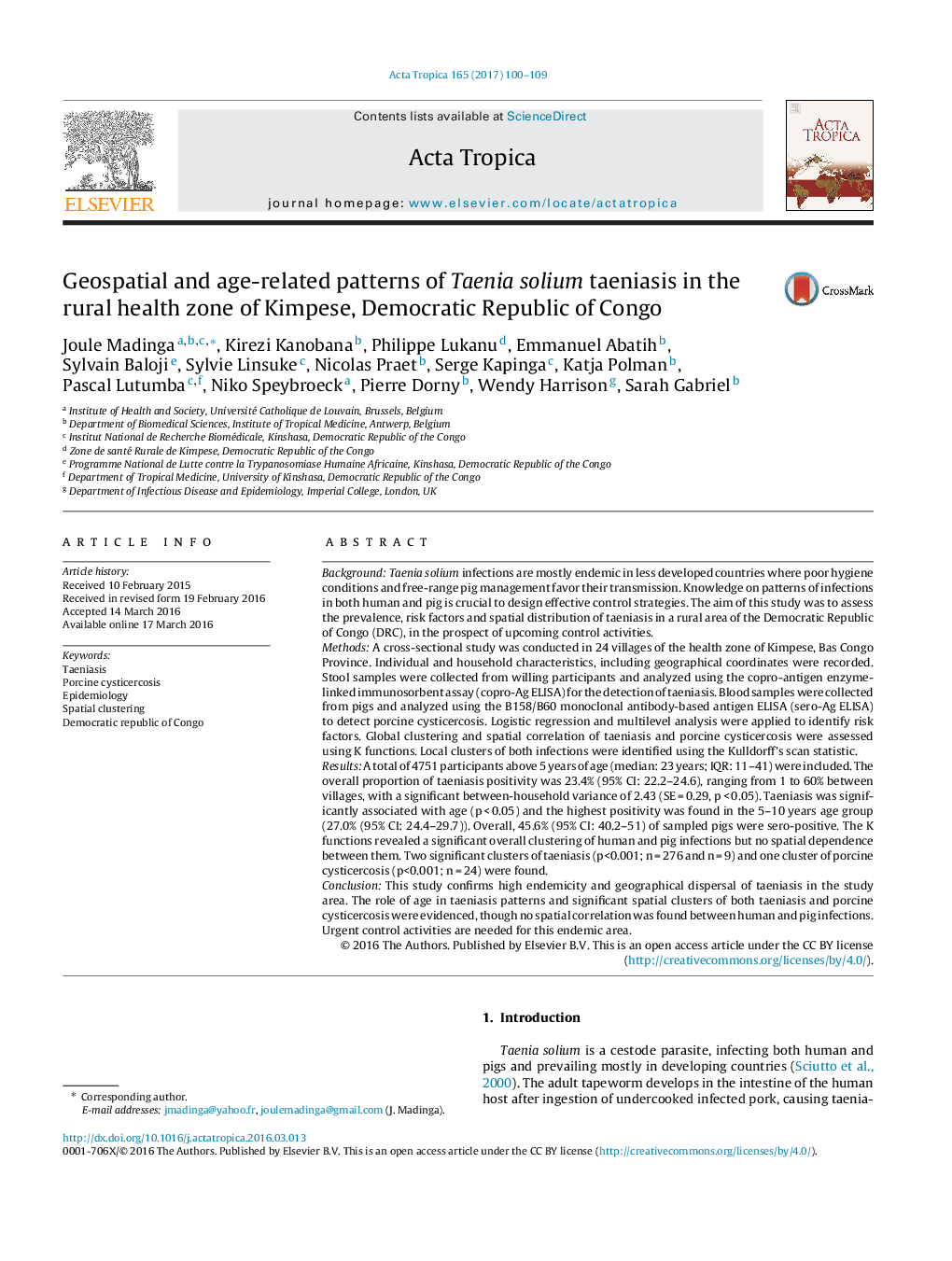| Article ID | Journal | Published Year | Pages | File Type |
|---|---|---|---|---|
| 5670826 | Acta Tropica | 2017 | 10 Pages |
â¢We assessed patterns of taeniasis in 24 village communities of Kimpese health zone.â¢Prevalence of taeniasis was very high and varied between households and villages.â¢Children of five to ten years were the most infected age group.â¢Taeniasis was not spatially correlated with porcine cysticercosis.
BackgroundTaenia solium infections are mostly endemic in less developed countries where poor hygiene conditions and free-range pig management favor their transmission. Knowledge on patterns of infections in both human and pig is crucial to design effective control strategies. The aim of this study was to assess the prevalence, risk factors and spatial distribution of taeniasis in a rural area of the Democratic Republic of Congo (DRC), in the prospect of upcoming control activities.MethodsA cross-sectional study was conducted in 24 villages of the health zone of Kimpese, Bas Congo Province. Individual and household characteristics, including geographical coordinates were recorded. Stool samples were collected from willing participants and analyzed using the copro-antigen enzyme-linked immunosorbent assay (copro-Ag ELISA) for the detection of taeniasis. Blood samples were collected from pigs and analyzed using the B158/B60 monoclonal antibody-based antigen ELISA (sero-Ag ELISA) to detect porcine cysticercosis. Logistic regression and multilevel analysis were applied to identify risk factors. Global clustering and spatial correlation of taeniasis and porcine cysticercosis were assessed using K functions. Local clusters of both infections were identified using the Kulldorff's scan statistic.ResultsA total of 4751 participants above 5 years of age (median: 23 years; IQR: 11-41) were included. The overall proportion of taeniasis positivity was 23.4% (95% CI: 22.2-24.6), ranging from 1 to 60% between villages, with a significant between-household variance of 2.43 (SE = 0.29, p < 0.05). Taeniasis was significantly associated with age (p < 0.05) and the highest positivity was found in the 5-10 years age group (27.0% (95% CI: 24.4-29.7)). Overall, 45.6% (95% CI: 40.2-51) of sampled pigs were sero-positive. The K functions revealed a significant overall clustering of human and pig infections but no spatial dependence between them. Two significant clusters of taeniasis (p<0.001; n = 276 and n = 9) and one cluster of porcine cysticercosis (p<0.001; n = 24) were found.ConclusionThis study confirms high endemicity and geographical dispersal of taeniasis in the study area. The role of age in taeniasis patterns and significant spatial clusters of both taeniasis and porcine cysticercosis were evidenced, though no spatial correlation was found between human and pig infections. Urgent control activities are needed for this endemic area.
Graphical abstractDownload high-res image (119KB)Download full-size image
